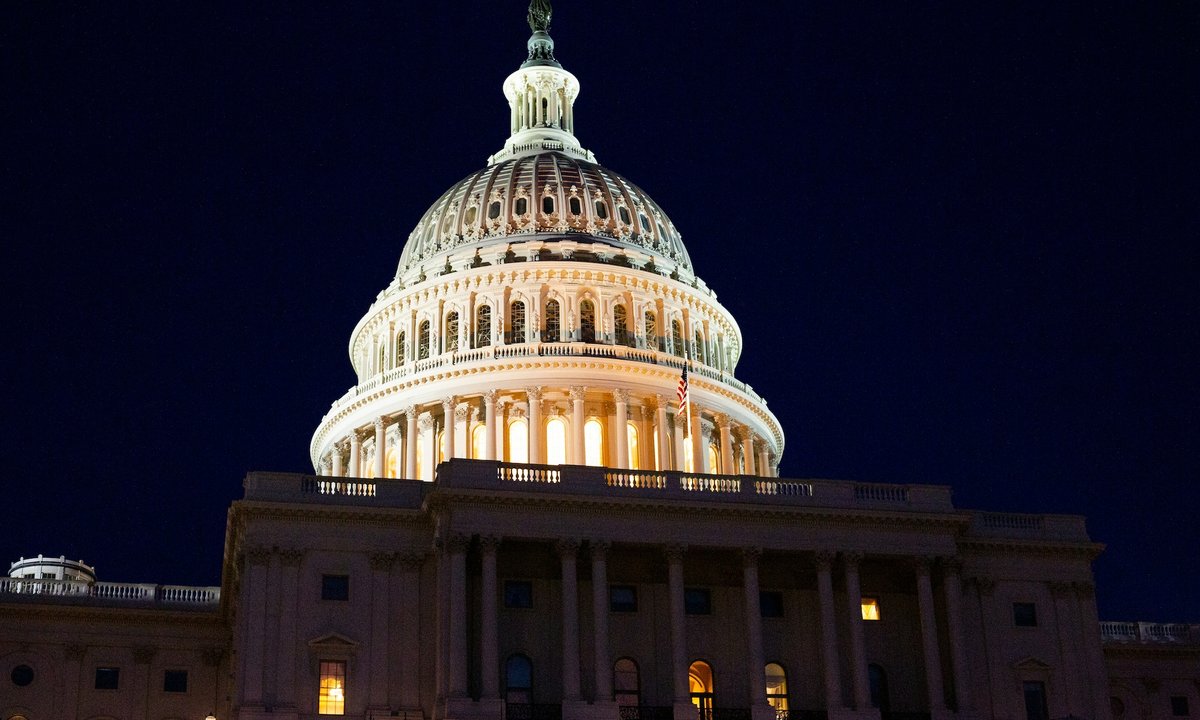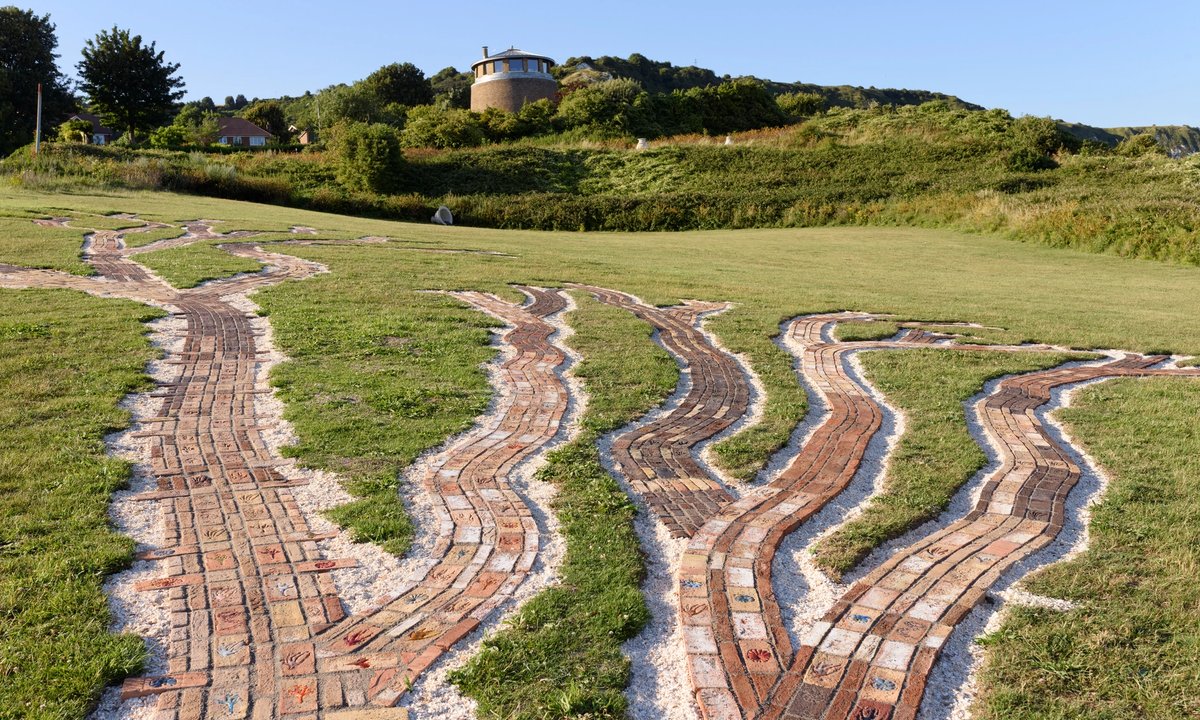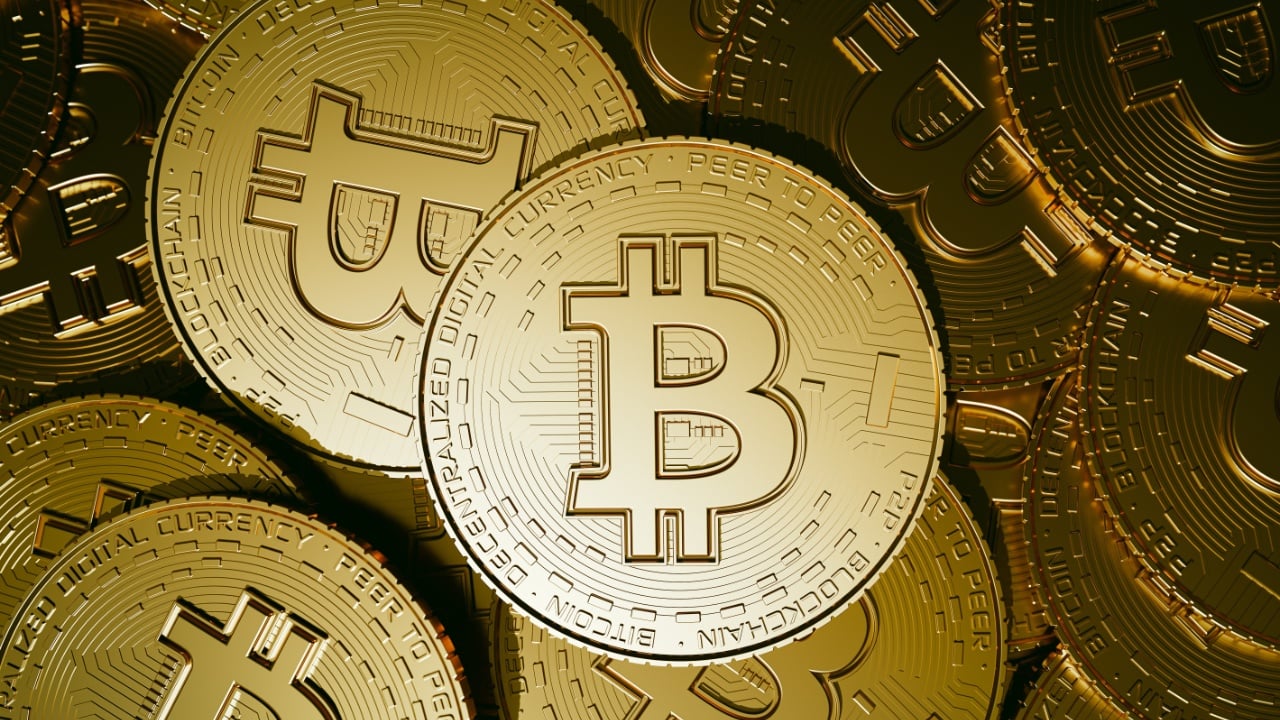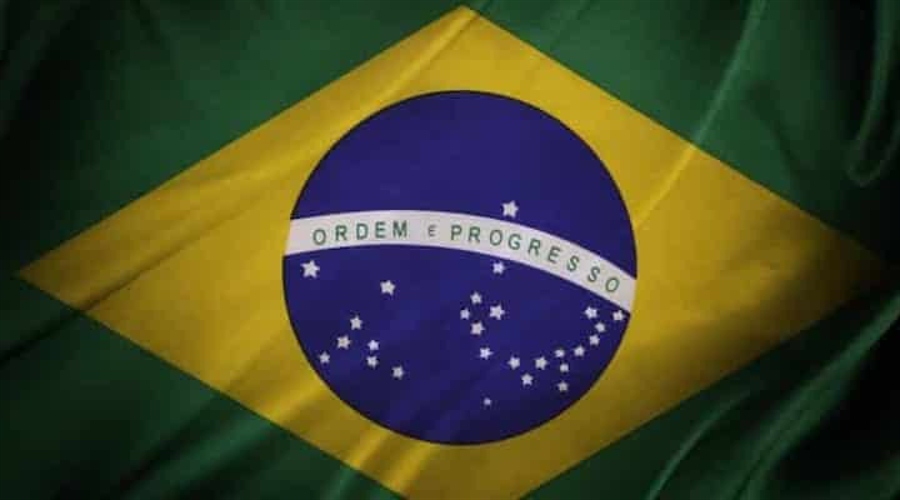Last weekend (18-19 July), while monsoon showers had reduced Kolkata to a waterlogged standstill, a gallery in the city was transformed into a mosh pit for deliberations on curatorial practices with leading figures in the field.
The Curators’ Hub is an annual event organised by the Experimenter Learning Program Foundation (ELPF), the eponymous Indian gallery’s nonprofit arm. Founded in 2011, the forum held its 14th edition this year. Speakers in past years have included vanguard voices like Bonaventure Soh Bejeng Ndikung, Barbara Piwowarska, Adam Szymczyk, Ranjit Hoskote, Hans Ulrich Obrist and Naomi Beckwith. From 2014 to 2023, it was moderated by Natasha Ginwala. This year, following a one-year hiatus, the baton passed to the art historian and curator Rattanamol Singh Johal.
“I encouraged each curator to consider presenting their practice through a set of key concepts or ideas, which could bring together a series of projects, and related thinking, into a narrative about where they see themselves at this moment in time,” Johal told The Art Newspaper prior the event. “I hoped this approach would allow each curator to draw connections between different projects across time and contexts.”
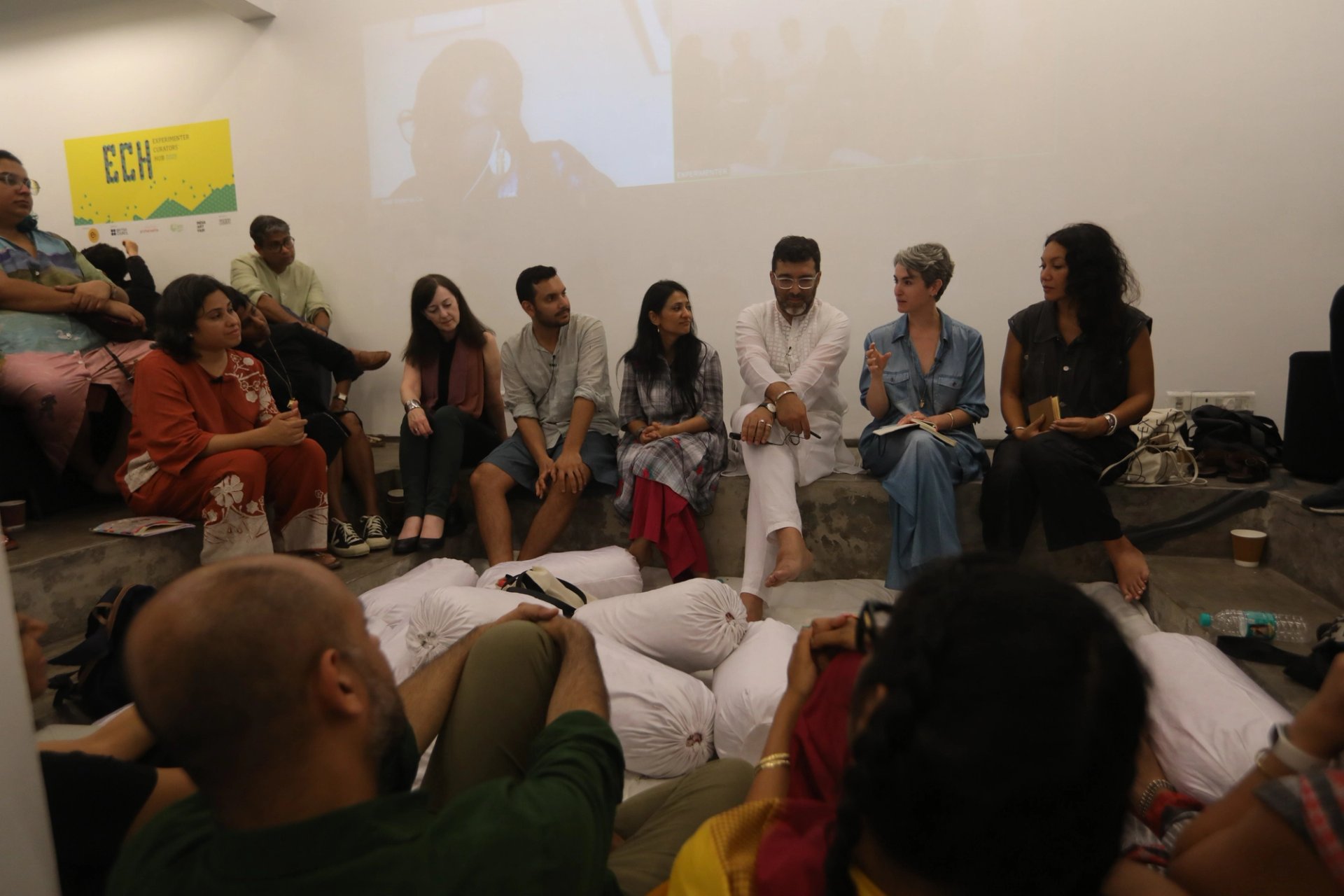
Courtesy: Experimenter Gallery. Photo: Jeet Sengupta
Across two days, multiple speakers urged the need for radical and collective curatorial approaches that can transcend institutional underpinnings, while also delving beyond their recent projects or current affiliations.
“How can we create space for critical work in environments where the enabling systems or structures do not exist yet?” asked Sharmini Pereira, the chief curator of the Museum of Modern and Contemporary Art Sri Lanka (MMCASL) in the opening session on the first day. She then detailed how she began publishing artist books as a way of curating at a time when contemporary art museums did not exist in Sri Lanka. Drawing from her varied experiences, she asserted that creative possibilities emerge when a practice is shaped by one’s context rather than the context being imposed upon it. “Hold yourselves accountable and situate yourself”, she urged the aspiring curators in the audience.
Borrowing a quote from artist Brontë Velez, Amal Khalaf, the director of programmes at Cubitt, London, who recently co-curated the 16th edition of the Sharjah Biennial, declared that collaboration was a means for “co-liberation”, whereby a curatorial practice attempts to achieve collective transformation and social change. “How can we work in institutions which don’t want us, which may have historically enforced white supremacist patriarchal narratives, and disrupt it from within to create spaces for life affirming ideas and praxis?” she asked.
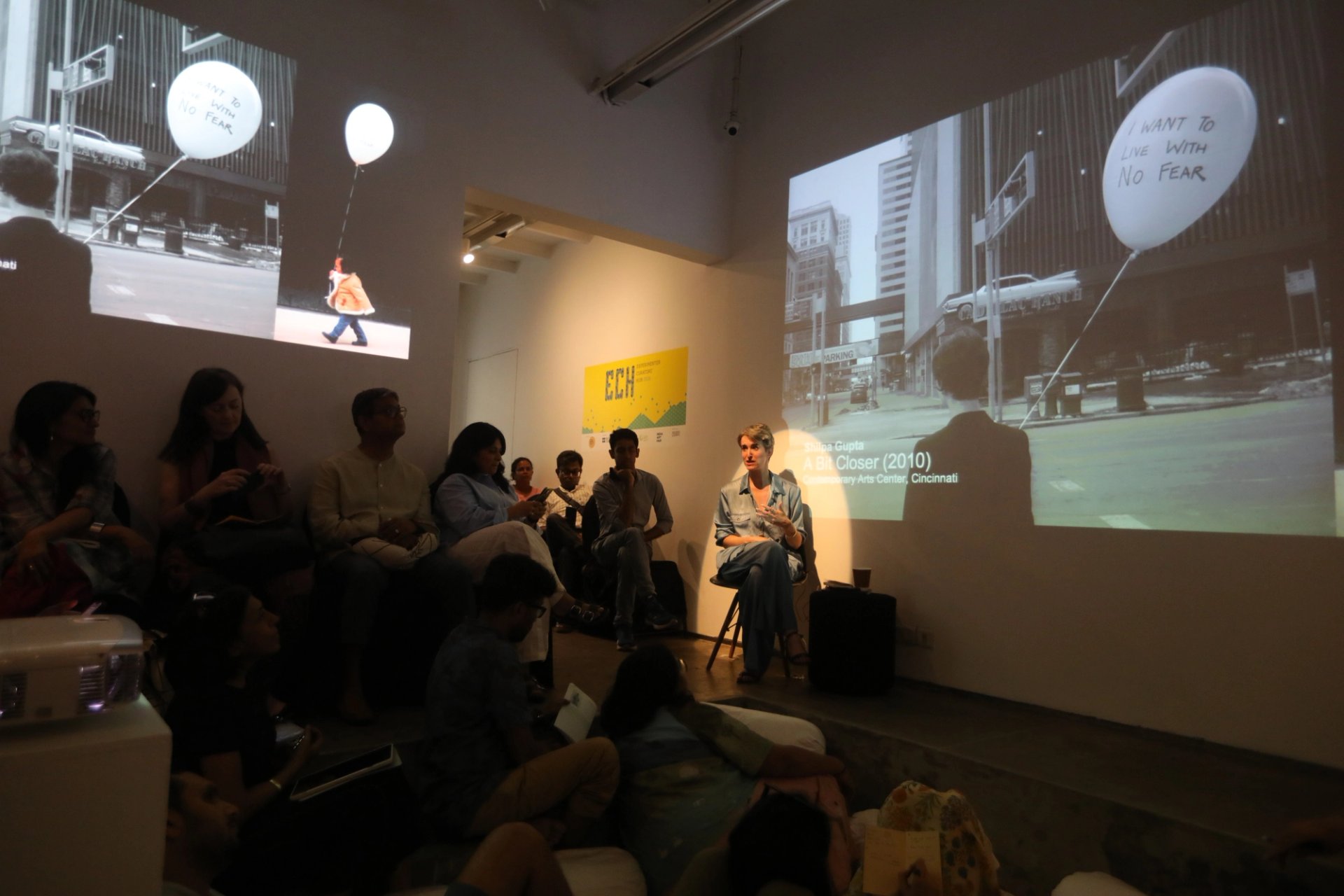
Justine Ludwig at Experimenter Curator’s Hub 2025
Courtesy: Experimenter Gallery. Photo: Jeet Sengupta
Justine Ludwig, the executive director of Creative Time, New York, underlined the point that public art need not just be art installed outside. “Rather it is art that meets the moment. It is in fact rooted in the political realities of the moment in which we are showing it. In interaction with the public, it can create sites of discourse, site of community, or sites of healing.”
Anne Barlow, currently the director of Tate St Ives, reflected on her prior experience at the New Museum. She outlined the collaborative idea of the “museum as a hub” she had initiated: “Developed through a series of interdisciplinary think-tanks, the hub examined new ways of connecting with other institutions and artist initiatives internationally while engaging with audiences outside the traditional exhibition making format,” she said.
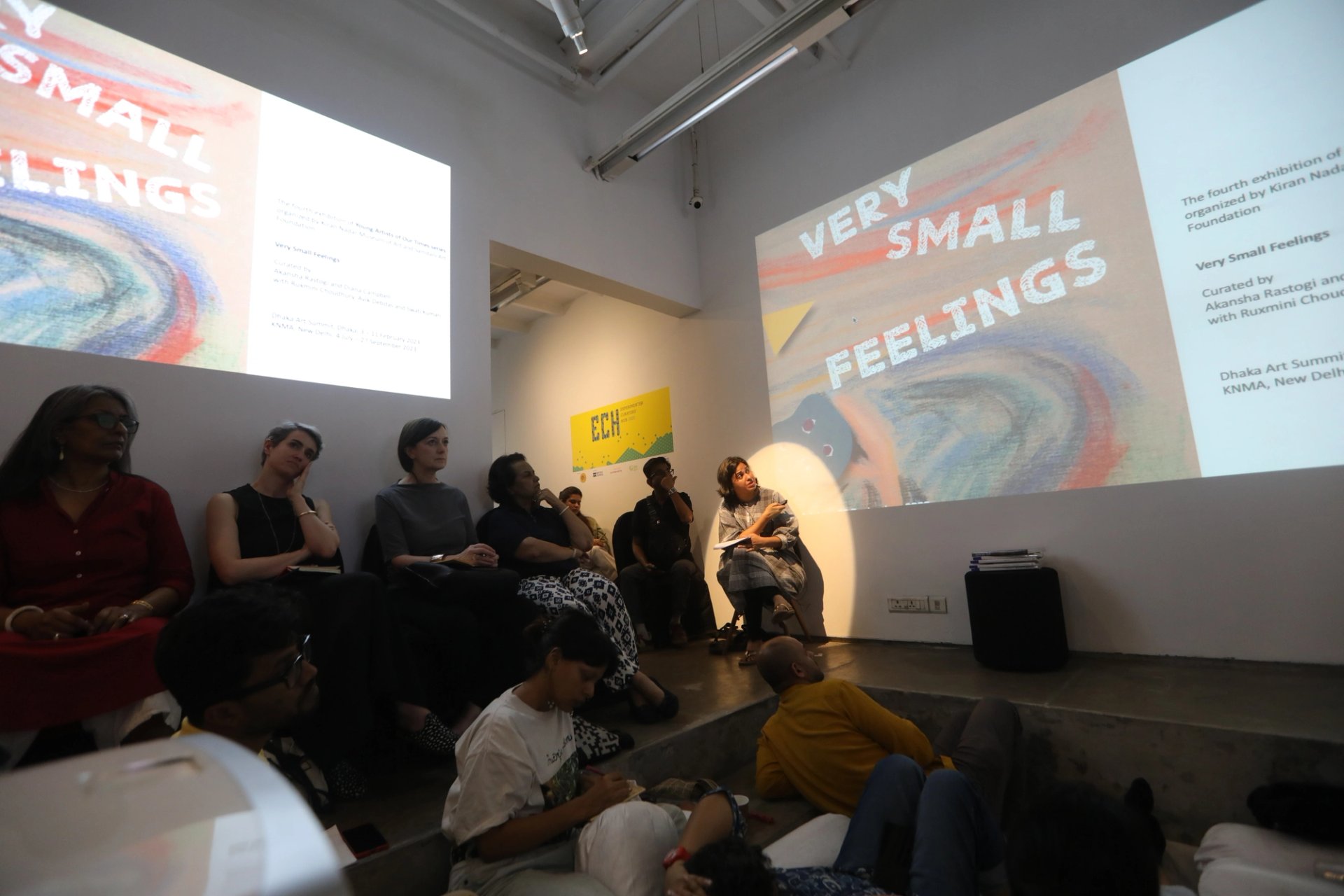
Akansha Rastogi presents at Experimenter Curator’s Hub
Courtesy: Experimenter Gallery. Photo: Jeet Sengupta
Mohamed Almusibli built upon the unusual idea of the “institution as a host”, drawing a line from his living room in Geneva where he ran an independent art space called Cherish from 2019 to 2023, hosting over 20 exhibitions spotlighting both local and international artists, to his recent interventions at a more imposing space like Kunsthalle Basel, of which he was appointed the director and chief curator in 2024.
India-based curators who took part in the hub included Akansha Rastogi, senior curator, exhibitions and programming at the Kiran Nadar Museum of Art (KNMA), New Delhi and Puja Vaish, the director of the Jehangir Nicolson Art Foundation (JNAF), Mumbai. Vaish spoke about her journey of infusing large Mumbai-based colonial era institutions like Bhau Daji Lad Museum (set up originally as the Victoria and Albert Museum) and the Chhatrapati Shivaji Maharaj Vastu Sangrahalaya (CSMVS, erstwhile Prince of Wales Museum) with contemporary art, while curating exhibitions that went way beyond their legacy collections.
In an emotionally charged talk on the second day, Fatima Bintou Rassoul SY, the director of programs at RAW Material Company, Dakar, Senegal who joined over Zoom, invoked the legacy of the late Koyo Kouoh. Kouoh, RAW Material’s founding artistic director, had died earlier in May this year, and had been a strong advocate of institution building as a curatorial practice. “As a non-commercial arts centre, we work to address an artistic and critical void within our local communities, where we attempt to enable them to have a better relationship with their history or better living conditions,” said Rassoul while acknowledging that the learning is often the other way round. “Most of the time they are already organised with the knowledge to deal with their challenges. What we provide is the infrastructure and the technical-administrative support for them to be able to go further.”
To make the hub more accessible, the weekend’s talks were recorded and have been uploaded online. “Apart from being livestreamed, the video archives are available on our website,” said Prateek Raja, the co-founder of Experimenter. “They offer a valuable knowledge hub for students and researchers to access later.”




